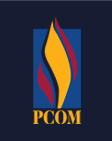Learners of a New Generation
Document Type
Book
Publication Date
2015
Abstract
To identify educational practices that will best facilitate the development of expertise, we must first understand the learner. Student cohorts in post K-12 education are generally composed of learners from multiple generations. Learning cohorts from previous generations who were accustomed to a limited range of educational resources acclimated to learning through primarily aural and read/write modalities. The educational environment for millennial generation learners has been dominated by technology. As a result a variety of learning styles, not apparent in previous generations, have become common. These learning styles are incidental to novel resources to which learners now have access. Strategies designed to promote successful knowledge acquisition for learners of any style should incorporate a variety of the ever-increasing array of available innovative educational paradigms and digital resources. In addition to resources, other factors that should be considered in the design of strategies which can influence the success of next generation learning include their (1) tendency to learn via real-world applications, (2) unfamiliarity with educational technology, (3) weakness in information literacy, (4) need for frequent feedback, and (5) predilection to work in teams. A multifactorial approach to facilitate the development of expertise will best support individual scholarly effort and preparation for lifelong learning.
Publication Title
Teaching Anatomy: a Practical Guide
First Page
11
Last Page
21
Recommended Citation
DiLullo, Camille, "Learners of a New Generation" (2015). PCOM Scholarly Works. 301.
https://digitalcommons.pcom.edu/scholarly_papers/301

Comments
Chapter 2 of Teaching Anatomy: a Practical Guide, by Lap Ki Chan and Wojciech Pawlina (eds.), 2015.
Copyright © 2015 Springer International Publishing.